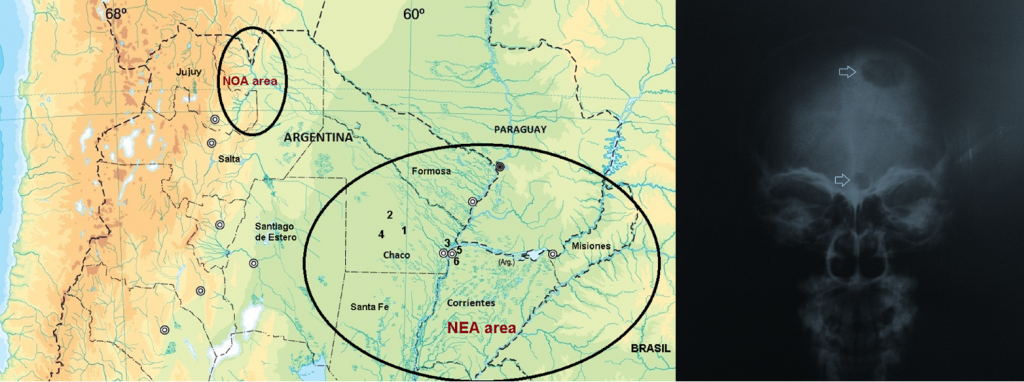SUMMARY: Serious systemic paracoccidioidomycosis infections are often associated with men working in agriculture. Dr Guisano and colleagues describe a cluster of six cases in children in the NEA area of Argentina that occurred during the 1982-3 El Niño Southern Oscillation climatic anomaly, and suggest that climatic and anthropogenic changes may have played a role
Paracoccidioidomycosis (PCM) is caused by a dimorphic fungus endemic to Latin America that generally produces a subclinical infection; however, in 1-2% it can cause a serious systemic infection, primarily seen among adult males working in agriculture. It is rare in children but the mortality rate may be high in this group.
Dr Gustavo Giusiano and colleagues in Argentina present six cases (age 10-16) of PCM seen in Corrientes (NEA area) between 2010 and 2012. Most of the children lived in urban areas (i.e. without exposure to agriculture) but all of those who suffered from systemic disease were malnourished. Treatment with itraconazole (and in most cases amphotericin B) was successful in most cases, although one patient died.
It has previously been suggested that climatic factors (rain, air humidity, soil water storage, SOI etc) influence the incidence of childhood PCM, and a cluster of cases was seen during the 1982-3 El Niño Southern Oscillation climatic anomaly.
A high index of suspicion should be maintained in the NOA/NEA areas (see map), and it is important to remember that antibody tests may give false negatives due to differences in antigen composition between strains from different regions. You can check the current SOI at the Australian Government’s Bureau of Meteorology.
Read the paper: Guisano et al (2019) Medical Mycology 57: 30–37


